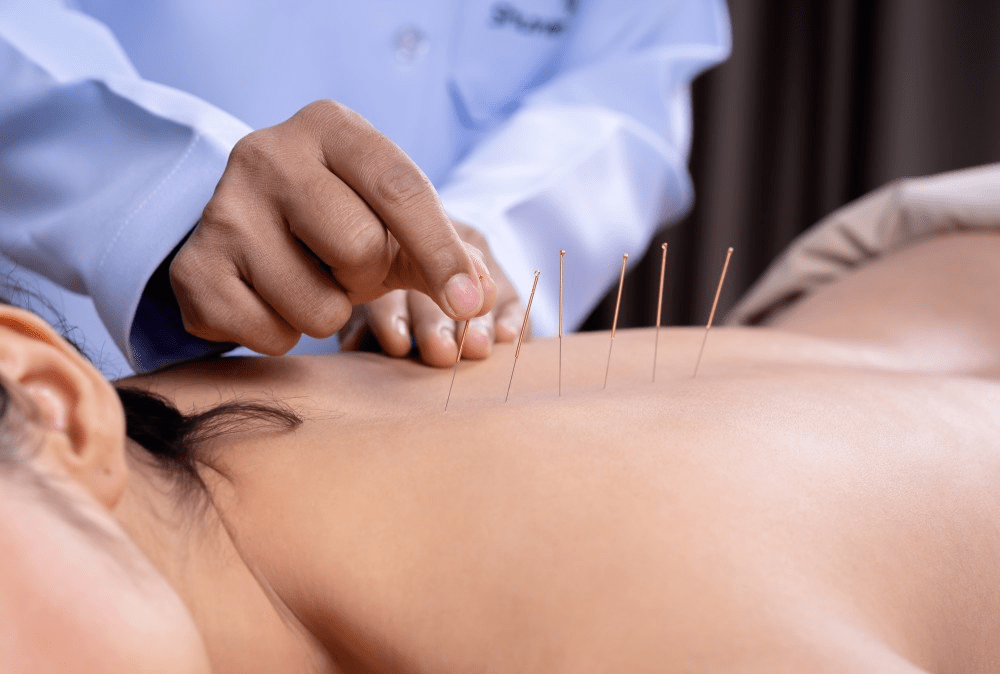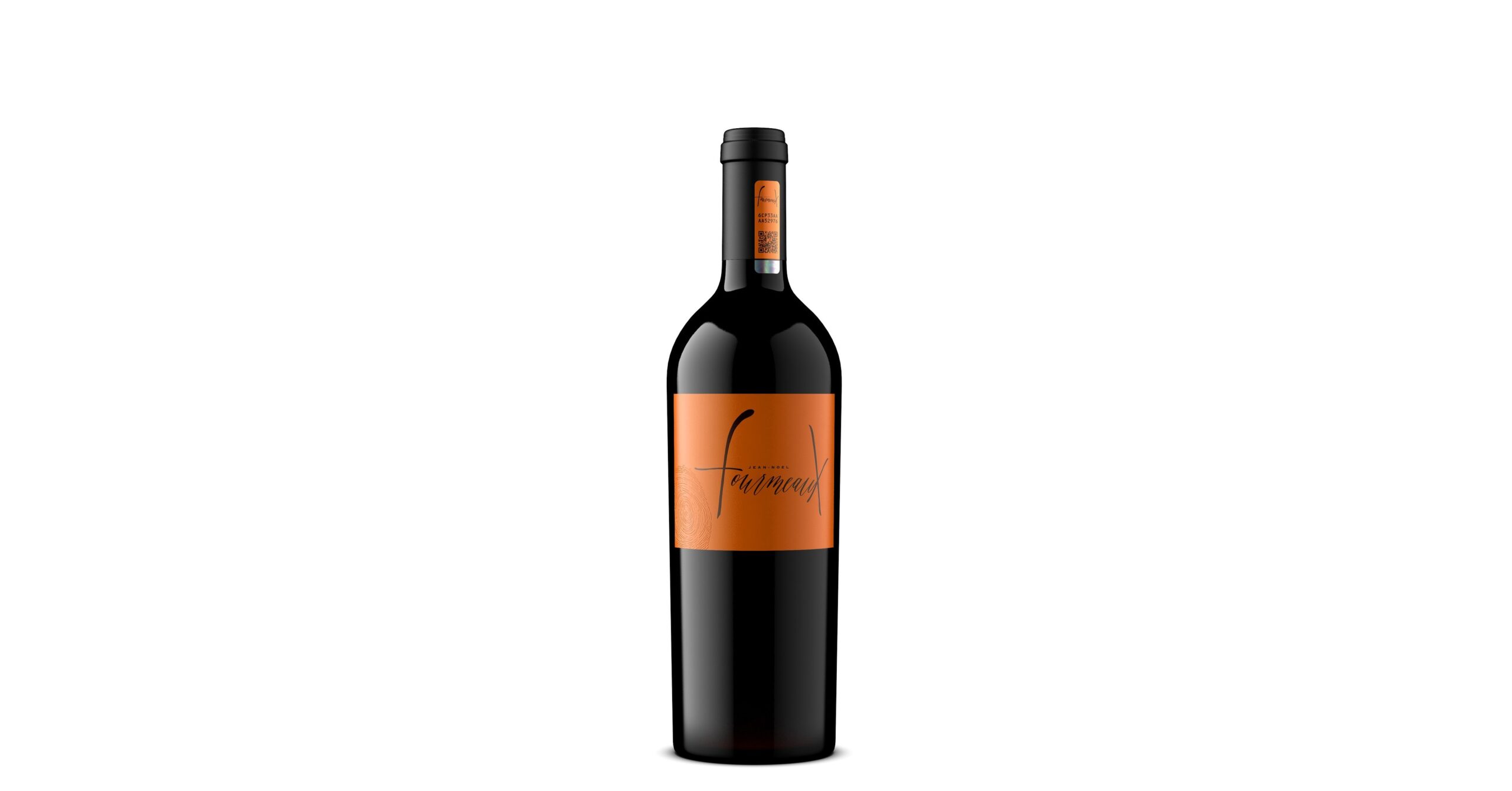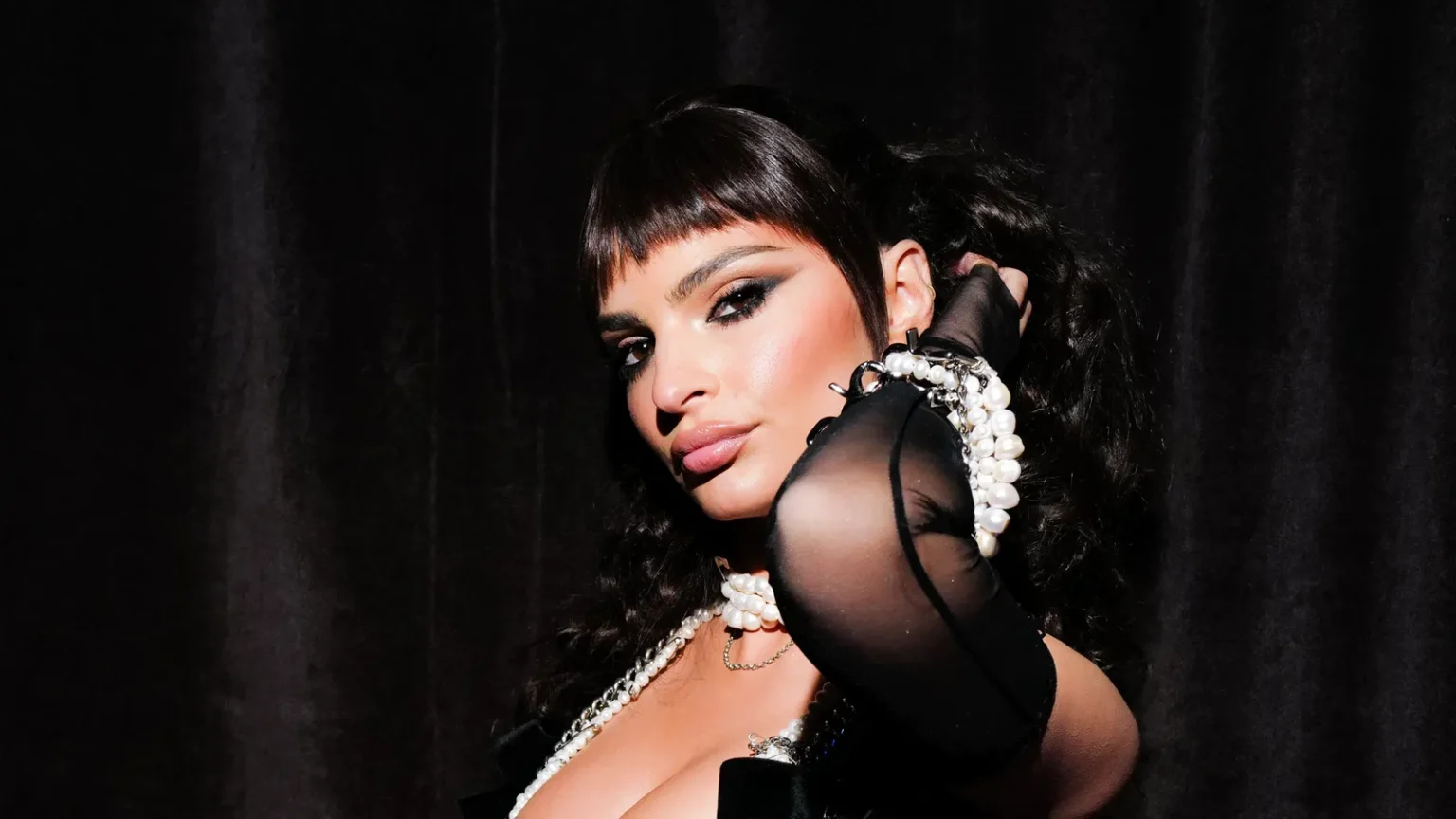Discover the fusion of traditional therapies with a modern twist, as ancient healing practices find new expressions in the contemporary wellness landscape. Immerse yourself in the rejuvenating world of traditional therapies with a modern twist.
Are you ready to experience the ancient healing wisdom of traditional therapies, infused with a modern twist? Step into a world where time-honored practices meet innovative approaches, creating a harmonious blend of old and new in the realm of wellness. Join us on a journey to explore the transformative power of traditional therapies with a modern twist
Traditional Therapies with a Modern Twist: Blending Ancient Wisdom with Contemporary Wellness
In today’s fast-paced and ever-evolving world, the pursuit of holistic well-being has become a priority for many individuals. While modern advancements in medicine and technology have their merits, there is a growing recognition of the profound wisdom and effectiveness of traditional therapies. These ancient healing practices, rooted in various cultures around the world, have stood the test of time and continue to offer valuable insights into achieving balance and harmony. However, as the wellness industry evolves, these traditional therapies are also being infused with a modern twist, combining ancient wisdom with contemporary approaches for enhanced well-being.
Rediscovering Traditional Therapies
Traditional therapies have long been revered for their ability to promote holistic well-being and restore balance to the body, mind, and spirit. These ancient practices, rooted in various cultures around the world, have stood the test of time and continue to offer profound insights into achieving health and harmony. In recent years, there has been a resurgence of interest in these traditional therapies, as people seek alternatives to conventional medicine and strive to reconnect with their roots. However, what makes this revival even more compelling is the infusion of a modern twist, where ancient wisdom is revitalized and adapted to suit the needs and preferences of the contemporary world.
Embracing Ancient Wisdom
Traditional therapies encompass a wide range of healing modalities, including Ayurveda, Traditional Chinese Medicine (TCM), acupuncture, herbal medicine, and indigenous practices. These therapies often emphasize the interconnectedness of the body, mind, and spirit and view health as a state of balance and harmony within oneself and with the natural world. By drawing on ancient wisdom, these practices offer valuable insights into preventive care, promoting vitality, and restoring overall well-being.
Modernization of Traditional Therapies
While traditional therapies have deep roots in history, they are not static. The modernization of traditional therapies involves adapting these ancient practices to meet the demands and expectations of the modern world. This process incorporates scientific research, integrates complementary approaches, and embraces innovative techniques and technologies, while still staying true to the core principles and philosophies of the traditional therapies.
Scientific Validation and Integration
One significant aspect of modernizing traditional therapies is the scientific validation of their effectiveness. Researchers are increasingly exploring the mechanisms behind these ancient practices, conducting studies to understand their physiological and psychological impacts, and uncovering evidence to support their therapeutic benefits. This scientific validation not only adds credibility to traditional therapies but also facilitates their integration with conventional medicine, creating a more comprehensive and holistic approach to health and wellness.
Integration of Eastern and Western Practices
Another key aspect of the modern twist in traditional therapies is the integration of Eastern and Western practices. Recognizing the value of both systems, practitioners are blending the ancient wisdom of traditional therapies with the advancements of modern medicine. This integration allows for a more holistic understanding of health and well-being, combining the strengths of both approaches and offering individuals a wider range of options to address their unique needs.
Innovation and Accessibility
The modernization of traditional therapies also involves embracing innovation and making them more accessible to a broader audience. This includes the use of technology, such as telemedicine, mobile apps, and wearable devices, to facilitate remote consultations, personalized treatment plans, and self-care practices. These advancements not only make traditional therapies more convenient but also empower individuals to take an active role in their own well-being.
The Power of Rediscovery
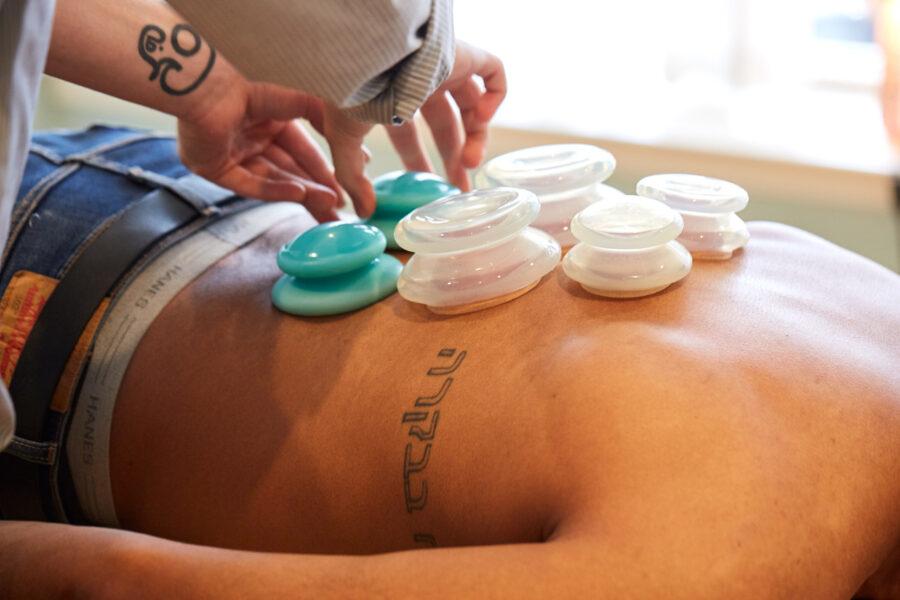
By rediscovering traditional therapies with a modern twist, individuals can tap into the wealth of wisdom accumulated over centuries. They can benefit from the holistic and personalized approach of these ancient practices, while also harnessing the advancements of modern science and technology. This integration allows for a more comprehensive and nuanced understanding of health, offering individuals a path to optimize their well-being on physical, mental, and emotional levels.
Bridging the Gap Between Ancient and Modern
The revitalization of traditional therapies with a modern twist represents a powerful bridge between ancient wisdom and contemporary needs. By embracing these time-tested practices and infusing them with scientific validation, integration of Eastern and Western approaches, and innovative technologies, we can rediscover the richness of traditional therapies in a way that is relevant and accessible to the modern world. So, whether you seek the healing touch of acupuncture, the balance of Ayurveda, or the rejuvenating power of herbal medicine, consider exploring the modern
The Modernization of Traditional Therapies
In our fast-paced and technology-driven world, there is a growing desire to reconnect with our roots and explore the wisdom of ancient traditions. Traditional therapies, which have been passed down through generations, offer valuable insights into holistic well-being and have stood the test of time. However, as society evolves, so too must these ancient practices. This has led to the modernization of traditional therapies, creating a fusion of old and new that brings the benefits of ancient wisdom to the contemporary world.
Preserving the Essence of Tradition
The modernization of traditional therapies does not seek to discard or dilute the essence of these ancient practices. Instead, it aims to preserve their core principles while adapting them to meet the needs and preferences of modern individuals. The wisdom and knowledge gained from centuries of practice are still deeply valued, but there is also a recognition that these therapies can be enhanced and made more accessible through modern advancements.
Integration of Scientific Research
One significant aspect of the modernization process is the integration of scientific research. Traditional therapies are being subjected to rigorous scientific studies to understand their mechanisms, benefits, and potential applications. This scientific validation adds credibility to these ancient practices, enabling them to be integrated into mainstream healthcare systems and expanding their reach to a wider audience.
Incorporating Contemporary Approaches
Traditional therapies are being infused with contemporary approaches to create a modern twist. This includes incorporating elements from other complementary healing modalities, such as Western medicine, psychology, and nutrition. By blending different therapeutic approaches, practitioners can offer a more comprehensive and personalized treatment experience, addressing the complex needs of individuals in a holistic manner.
Utilizing Technological Advancements
Technological advancements are also playing a pivotal role in the modernization of traditional therapies. From wearable devices that monitor health indicators to mobile apps that provide guided meditation and wellness programs, technology is being harnessed to enhance the accessibility, convenience, and effectiveness of traditional therapies. This integration of technology allows individuals to engage with these therapies in their daily lives, even when they are unable to physically visit a practitioner.
Tailoring to Individual Needs
Modernized traditional therapies emphasize the importance of personalized care. Recognizing that each individual is unique, these therapies are being tailored to address specific needs and preferences. By taking into account an individual’s lifestyle, medical history, and goals, practitioners can create customized treatment plans that optimize the benefits of traditional therapies while considering the demands of modern living.
The Benefits of Traditional Therapies with a Modern Twist
The modernization of traditional therapies offers several benefits to individuals seeking holistic well-being:
Increased Accessibility: Modernized traditional therapies can be accessed through various channels, including online platforms, mobile apps, and telehealth services. This accessibility allows individuals to engage with these therapies regardless of their location or schedule.
Integration with Conventional Medicine: The integration of traditional therapies with modern healthcare systems allows for a more comprehensive approach to wellness. By combining the strengths of both traditional and contemporary approaches, individuals can benefit from a wider range of treatment options.
Scientific Validity: The integration of scientific research provides evidence-based support for the efficacy of traditional therapies. This scientific validation helps to build trust and acceptance among individuals and healthcare professionals alike.
Personalization and Customization: Modernized traditional therapies recognize the unique needs of individuals and offer tailored treatment plans. This personalized approach ensures that individuals receive the most relevant and effective care for their specific requirements.
Preservation of Cultural Heritage: The modernization of traditional therapies allows for the preservation and promotion of cultural heritage. By adapting these practices to modern contexts, they can continue to thrive and be appreciated by individuals from diverse backgrounds.
Embracing Tradition in a Modern World
Scientific Validation and Integration
In the realm of holistic wellness, the intersection of traditional therapies and modern science is an exciting frontier. Traditional therapies, rooted in ancient wisdom and cultural practices, have long been cherished for their holistic approach to health and well-being. However, the integration of these practices into modern wellness requires scientific validation, which serves as a bridge between ancient traditions and evidence-based medicine.
Validating Traditional Therapies
Scientific validation involves rigorous research and investigation to understand the mechanisms and benefits of traditional therapies. Through controlled studies, clinical trials, and systematic reviews, researchers aim to determine the efficacy, safety, and potential applications of these ancient practices. This validation process helps to establish the credibility and reliability of traditional therapies, ensuring that they can be embraced with confidence by both practitioners and individuals seeking holistic healing.
Understanding the Mechanisms
Scientific validation delves into the underlying mechanisms of traditional therapies, unraveling the science behind their effectiveness. Researchers explore various aspects, such as the biochemical and physiological effects of herbal remedies, the impact of acupuncture on neural pathways, or the mind-body connection in practices like yoga and meditation. This deeper understanding of the mechanisms enables practitioners and individuals to make informed decisions about incorporating these therapies into their wellness routines.
Integration with Conventional Medicine

Scientific validation also paves the way for the integration of traditional therapies with conventional medicine. Recognizing the value of both systems, healthcare professionals are increasingly open to combining traditional and modern approaches to promote optimal health outcomes. Integrative medicine clinics, for example, provide a holistic framework that incorporates evidence-based traditional therapies alongside conventional treatments, offering individuals a comprehensive and personalized approach to their well-being.
Enhancing Treatment Options
Scientific validation expands the range of treatment options available to individuals. It empowers them to make informed choices about their health and explore therapies beyond the scope of conventional medicine alone. By integrating traditional therapies, individuals may access additional avenues for healing and find complementary approaches that address their unique needs. This expanded toolkit provides a more comprehensive and patient-centered approach to well-being.
Preventing and Managing Chronic Conditions
Scientific validation of traditional therapies has shown promise in preventing and managing chronic conditions. For instance, studies have highlighted the potential of Ayurvedic practices in managing stress, yoga in reducing pain and improving flexibility, and herbal remedies in supporting various aspects of health. Integrating these therapies into conventional treatment plans may help individuals achieve better outcomes and enhance their overall quality of life.
Cultivating Collaboration and Respect
Scientific validation fosters collaboration and respect between traditional healers and modern healthcare professionals. It acknowledges the immense knowledge and wisdom held by traditional practitioners, ensuring that their contributions are valued and integrated into the broader healthcare landscape. This collaboration allows for the exchange of ideas, the sharing of expertise, and the mutual benefit of patients seeking comprehensive care.
Bridging Ancient Wisdom and Modern Science
Scientific validation and integration serve as a bridge between traditional therapies and modern wellness, connecting ancient wisdom with evidence-based medicine. By subjecting traditional practices to scientific scrutiny, we can unlock their potential and understand how they can contribute to our well-being. The validation process not only enhances the credibility of traditional therapies but also fosters collaboration between different healing traditions. As we continue to explore the fusion of ancient wisdom and modern science, we open up new possibilities for holistic well-being and the integration of diverse approaches to health.
Combining Eastern and Western Approaches
In the pursuit of holistic well-being, the integration of Eastern and Western approaches has gained significant recognition and popularity. The merging of these two distinct systems of medicine and healing offers a unique synergy that enhances the effectiveness and comprehensiveness of traditional therapies with a modern twist. By combining the wisdom of ancient Eastern traditions with the advancements of Western medicine, individuals can access a more integrated and personalized approach to wellness.
Understanding Eastern and Western Approaches
Eastern and Western approaches to health and healing have evolved separately over centuries, each with its own principles, philosophies, and modalities. Eastern approaches, such as Traditional Chinese Medicine (TCM) and Ayurveda, are rooted in the belief that optimal health is achieved through the balance and harmony of the body, mind, and spirit. These systems emphasize individualized treatments, natural remedies, and the interplay of energy or life force.
On the other hand, Western medicine focuses on diagnosing and treating specific diseases or symptoms using scientific methods, pharmaceuticals, and surgical interventions. It emphasizes evidence-based practices, technological advancements, and specialized medical disciplines.
The Synergy of Integration
When Eastern and Western approaches are combined, they complement and enhance each other’s strengths, creating a more comprehensive and integrative approach to wellness. By drawing on the strengths of both systems, individuals can benefit from a broader range of treatment options and a deeper understanding of their health.
For example, blending acupuncture, a traditional Chinese therapy, with Western medical practices can offer a multi-dimensional approach to pain management, stress reduction, and overall well-being. Integrating Ayurvedic principles with evidence-based nutrition and lifestyle recommendations can optimize digestive health and promote balance in the body.
Personalized and Holistic Care
The integration of Eastern and Western approaches allows for a more personalized and holistic approach to care. By considering an individual’s unique needs, constitution, and lifestyle, practitioners can tailor treatment plans that address the root causes of imbalances rather than merely alleviating symptoms. This approach recognizes that each person is unique and requires a customized approach to achieve optimal well-being.
Bridging the Gap between Science and Tradition
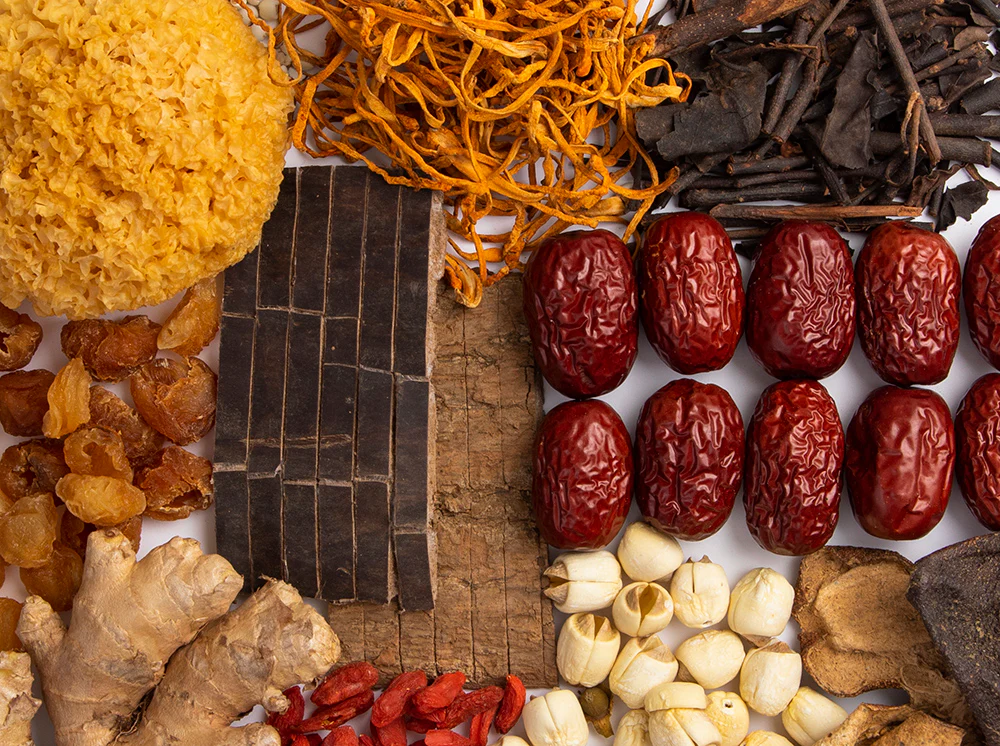
The integration of Eastern and Western approaches also bridges the gap between scientific research and traditional wisdom. Scientific studies are increasingly validating the efficacy and mechanisms of action behind traditional therapies, providing evidence to support their use. This integration allows for greater acceptance and collaboration between practitioners from both systems and fosters a deeper understanding of the benefits of traditional therapies in modern healthcare.
The Benefits of Integration
The integration of Eastern and Western approaches on traditional therapies with a modern twist brings numerous benefits for individuals seeking holistic well-being:
Enhanced treatment options: The combination of modalities from different systems expands the range of available treatments, allowing individuals to choose the approach that resonates best with them.
Holistic understanding: By considering the interconnectedness of body, mind, and spirit, integrated therapies address the underlying causes of imbalances, promoting long-term well-being.
Personalized care: The integration allows for personalized treatment plans that consider individual needs, preferences, and lifestyle factors, ensuring a more tailored approach.
Scientific validation: The integration of scientific research with traditional wisdom adds credibility and allows for evidence-based practices.
Comprehensive healthcare: By incorporating the strengths of both systems, individuals can benefit from the best of both worlds, receiving well-rounded and comprehensive healthcare.
The Power of Integration
The combination of Eastern and Western approaches on traditional therapies with a modern twist represents a powerful synergy in the field of wellness. By embracing the strengths of both systems, individuals can access a more integrated, personalized, and holistic approach to their well-being.
Combining Eastern and Western Approaches
In the pursuit of holistic well-being, the integration of Eastern and Western approaches has gained significant traction. This harmonious blend allows for a more comprehensive and balanced perspective, leveraging the strengths of both systems to enhance the efficacy and accessibility of traditional therapies. By combining the ancient wisdom of Eastern practices with the scientific advancements of Western medicine, traditional therapies with a modern twist are empowering individuals to achieve optimal health and well-being.
The Essence of Eastern and Western Approaches
Eastern approaches to health, such as Ayurveda, Traditional Chinese Medicine (TCM), and acupuncture, have been refined and practiced for centuries. These systems emphasize the holistic nature of the human body and its interconnectedness with the environment. They view health as a state of balance and harmony between mind, body, and spirit, and focus on restoring this balance through natural remedies, energy flow, and personalized treatments.
On the other hand, Western medicine is rooted in evidence-based practices, diagnostic tools, and pharmaceutical interventions. It places emphasis on the understanding of biological mechanisms, disease pathology, and surgical interventions to treat specific symptoms or conditions. Western medicine excels in acute care, emergency medicine, and advanced technologies for diagnostics and treatments.
The Power of Integration
The integration of Eastern and Western approaches in traditional therapies offers a holistic and complementary approach to health and well-being. By combining the strengths of both systems, individuals can experience a more comprehensive and personalized approach to their health concerns.
Enhanced Diagnosis and Treatment
The integration of Eastern and Western approaches allows for a more nuanced and comprehensive diagnosis. Western diagnostic tools, such as laboratory tests and imaging techniques, can be used alongside Eastern diagnostic methods like pulse reading, tongue examination, and energy assessment. This combined approach provides a deeper understanding of the underlying causes of health issues and facilitates more targeted and effective treatment plans.
Complementary Therapies
Eastern and Western approaches can complement each other in the realm of therapies. For example, acupuncture, an ancient Eastern practice, has gained recognition in Western medicine for its effectiveness in pain management, stress reduction, and overall well-being. Similarly, herbal remedies from Ayurveda and TCM can be integrated into Western treatment protocols to support healing and enhance outcomes.
Mind-Body Connection
Both Eastern and Western approaches recognize the importance of the mind-body connection in achieving optimal health. Practices like meditation, mindfulness, and yoga from the East have been widely adopted in Western medicine as effective tools for stress reduction, mental well-being, and disease prevention. The integration of these practices with Western therapies allows individuals to tap into the healing potential of the mind-body connection.
A Holistic Approach to Prevention

By combining Eastern and Western approaches, traditional therapies with a modern twist prioritize preventive measures. Eastern practices focus on maintaining balance and preventing imbalances before they manifest as physical symptoms, while Western medicine offers screenings, vaccinations, and lifestyle interventions to prevent diseases. The integration of these approaches empowers individuals to take a proactive role in their health and well-being.
Embracing the Harmony of Eastern and Western Approaches
The combination of Eastern and Western approaches in traditional therapies with a modern twist offers a harmonious and comprehensive path to health and well-being. By integrating the wisdom of ancient Eastern practices with the advancements of Western medicine, individuals can experience a holistic, personalized, and effective approach to their health concerns. This harmonious blend allows us to leverage the strengths of both systems, tap into the mind-body-spirit connection, and embrace the power of preventive care. So, whether you seek the gentle touch of acupuncture, the wisdom of Ayurvedic remedies, or the precision of Western diagnostics, consider exploring the integration of Eastern and Western approaches in traditional therapies for a truly transformative
Technology and Innovation
In the pursuit of holistic well-being, the integration of Eastern and Western approaches has gained significant traction. This harmonious blend allows for a more comprehensive and balanced perspective, leveraging the strengths of both systems to enhance the efficacy and accessibility of traditional therapies. By combining the ancient wisdom of Eastern practices with the scientific advancements of Western medicine, traditional therapies with a modern twist are empowering individuals to achieve optimal health and well-being.
The Essence of Eastern and Western Approaches
Eastern approaches to health, such as Ayurveda, Traditional Chinese Medicine (TCM), and acupuncture, have been refined and practiced for centuries. These systems emphasize the holistic nature of the human body and its interconnectedness with the environment. They view health as a state of balance and harmony between mind, body, and spirit, and focus on restoring this balance through natural remedies, energy flow, and personalized treatments.
On the other hand, Western medicine is rooted in evidence-based practices, diagnostic tools, and pharmaceutical interventions. It places emphasis on the understanding of biological mechanisms, disease pathology, and surgical interventions to treat specific symptoms or conditions. Western medicine excels in acute care, emergency medicine, and advanced technologies for diagnostics and treatments.
The Power of Integration
The integration of Eastern and Western approaches in traditional therapies offers a holistic and complementary approach to health and well-being. By combining the strengths of both systems, individuals can experience a more comprehensive and personalized approach to their health concerns.
Enhanced Diagnosis and Treatment
The integration of Eastern and Western approaches allows for a more nuanced and comprehensive diagnosis. Western diagnostic tools, such as laboratory tests and imaging techniques, can be used alongside Eastern diagnostic methods like pulse reading, tongue examination, and energy assessment. This combined approach provides a deeper understanding of the underlying causes of health issues and facilitates more targeted and effective treatment plans.
Complementary Therapies
Eastern and Western approaches can complement each other in the realm of therapies. For example, acupuncture, an ancient Eastern practice, has gained recognition in Western medicine for its effectiveness in pain management, stress reduction, and overall well-being. Similarly, herbal remedies from Ayurveda and TCM can be integrated into Western treatment protocols to support healing and enhance outcomes.
Mind-Body Connection
Both Eastern and Western approaches recognize the importance of the mind-body connection in achieving optimal health. Practices like meditation, mindfulness, and yoga from the East have been widely adopted in Western medicine as effective tools for stress reduction, mental well-being, and disease prevention. The integration of these practices with Western therapies allows individuals to tap into the healing potential of the mind-body connection.
A Holistic Approach to Prevention
By combining Eastern and Western approaches, traditional therapies with a modern twist prioritize preventive measures. Eastern practices focus on maintaining balance and preventing imbalances before they manifest as physical symptoms, while Western medicine offers screenings, vaccinations, and lifestyle interventions to prevent diseases. The integration of these approaches empowers individuals to take a proactive role in their health and well-being.
Embracing the Harmony of Eastern and Western Approaches
The combination of Eastern and Western approaches in traditional therapies with a modern twist offers a harmonious and comprehensive path to health and well-being. By integrating the wisdom of ancient Eastern practices with the advancements of Western medicine, individuals can experience a holistic, personalized, and effective approach to their health concerns. This harmonious blend allows us to leverage the strengths of both systems, tap into the mind-body-spirit connection, and embrace the power of preventive care. So, whether you seek the gentle touch of acupuncture, the wisdom of Ayurvedic remedies, or the precision of Western diagnostics, consider exploring the integration of Eastern and Western approaches in traditional therapies for a truly transformative
The Benefits of Traditional Therapies with a Modern Twist
Traditional therapies with a modern twist bring a host of benefits to individuals seeking holistic well-being. By combining ancient wisdom with contemporary approaches, these practices offer a unique blend of tradition and innovation that can enhance overall health and wellness. Let’s explore some of the key benefits of embracing traditional therapies with a modern twist:
Holistic Approach: Traditional therapies, rooted in ancient wisdom, emphasize a holistic approach to well-being. They recognize the interconnectedness of mind, body, and spirit, and aim to restore balance and harmony in all aspects of life. By blending traditional practices with modern approaches, individuals can address their well-being from multiple angles, promoting a comprehensive sense of wellness.
Time-Tested Effectiveness: Traditional therapies have been practiced for centuries, often with remarkable results. These ancient practices have stood the test of time and have been embraced by generations for their healing properties. By infusing traditional therapies with modern knowledge and scientific validation, individuals can have confidence in the efficacy of these practices and harness their proven benefits.
Integration of Eastern and Western Wisdom: Traditional therapies with a modern twist allow for the integration of Eastern and Western approaches to health and wellness. By combining the wisdom of traditional practices with contemporary medical knowledge, individuals can benefit from a more comprehensive and inclusive understanding of well-being. This integration offers a wider range of options and approaches to address health concerns.
Personalization and Customization: With the modern twist, traditional therapies can be personalized and tailored to individual needs. Modern advancements in technology and research enable practitioners to create customized wellness programs that consider specific goals, preferences, and conditions. This personalized approach allows individuals to optimize the benefits of traditional therapies and make them more relevant and effective in their lives.
Accessibility and Convenience: One of the remarkable aspects of modernizing traditional therapies is the increased accessibility and convenience they offer. Technology has played a crucial role in making these practices more available to a wider audience. Digital platforms, mobile applications, and online resources provide individuals with easy access to information, guidance, and even remote consultations. This accessibility removes barriers and allows more people to experience the benefits of traditional therapies.
Promotion of Mind-Body Connection: Traditional therapies have long recognized the importance of the mind-body connection in maintaining well-being. The modern twist on these practices often emphasizes mindfulness, meditation, and other mind-body techniques that promote self-awareness and inner balance. By incorporating these practices into daily life, individuals can cultivate a deeper understanding of themselves, manage stress, and enhance their overall well-being.
Cultural Appreciation: Traditional therapies are deeply rooted in specific cultures and carry with them a rich heritage. Embracing these practices with a modern twist allows individuals to not only benefit from their healing properties but also to appreciate and honor the cultural traditions from which they originate. This cultural appreciation fosters a sense of connection and respect for diverse traditions and promotes cultural understanding.
The benefits of traditional therapies with a modern twist are vast and encompass physical, mental, and emotional well-being. By blending ancient wisdom with contemporary approaches, individuals can access the proven efficacy of traditional therapies while customizing their wellness journey to suit their unique needs. So, whether you find solace in yoga, acupuncture, herbal remedies, or any other traditional therapy, consider embracing the modernized versions of these practices and unlock the transformative power they hold for your overall health and vitality.
Embracing the Blend of Ancient and Modern
The blend of ancient and modern in traditional therapies offers a unique and powerful approach to holistic well-being. By integrating the wisdom of ancient healing practices with contemporary knowledge and technology, we can unlock a wealth of benefits for our physical, mental, and emotional health.
Embracing this blend allows us to draw upon the timeless wisdom of ancient cultures and their deep understanding of the interconnectedness of mind, body, and spirit. Traditional therapies, such as Ayurveda, Traditional Chinese Medicine, and indigenous healing modalities, provide us with valuable insights into achieving balance and harmony in our lives. These ancient practices remind us to honor the natural rhythms of life, nourish ourselves with quality ingredients, and cultivate mindfulness and self-care.
At the same time, the modernization of traditional therapies brings exciting possibilities. Scientific validation lends credibility to these ancient practices, helping bridge the gap between traditional and conventional medicine. By studying the mechanisms and effects of traditional therapies, researchers are uncovering evidence of their efficacy and expanding our understanding of their benefits. This scientific validation allows for greater acceptance and integration of these therapies into mainstream healthcare.
The integration of Eastern and Western approaches to health and well-being is another aspect of the blend of ancient and modern. Recognizing the strengths of both systems, practitioners and individuals are finding harmony in combining the wisdom of traditional therapies with the advancements of modern medicine. This integration allows for a more comprehensive and personalized approach to health, addressing the unique needs of each individual.
Furthermore, technology and innovation have opened new doors for traditional therapies. Digital platforms, wearable devices, and telemedicine have made these ancient practices more accessible, convenient, and customizable. Individuals can now access personalized wellness programs, track their progress, and receive guidance from experts regardless of their location. Technology has expanded the reach of traditional therapies, empowering individuals to take charge of their well-being in a way that suits their modern lifestyle.
Embracing the blend of ancient and modern on traditional therapies invites us to honor the wisdom of our ancestors while embracing the advancements of the present. It encourages us to tap into the innate healing power that lies within us and explore the vast possibilities for holistic well-being. By embracing this blend, we can experience the profound benefits of traditional therapies in a way that resonates with our contemporary lives.
The blend of ancient and modern on traditional therapies offers a holistic and integrative approach to well-being. It empowers us to harness the wisdom of the past while leveraging the advancements of the present. By embracing this blend, we can cultivate a deeper connection with ourselves, enhance our overall health, and embark on a transformative journey of wellness. So, let us embrace the blend of ancient and modern and embark on a path to holistic well-being that honors our roots and embraces the potential of the future.

